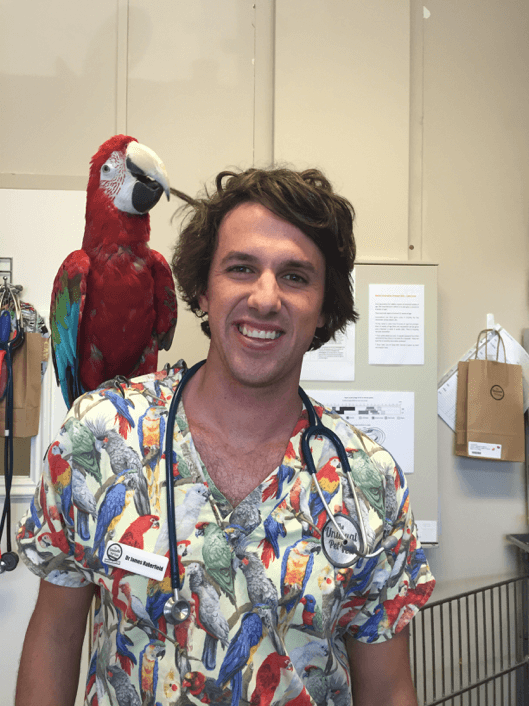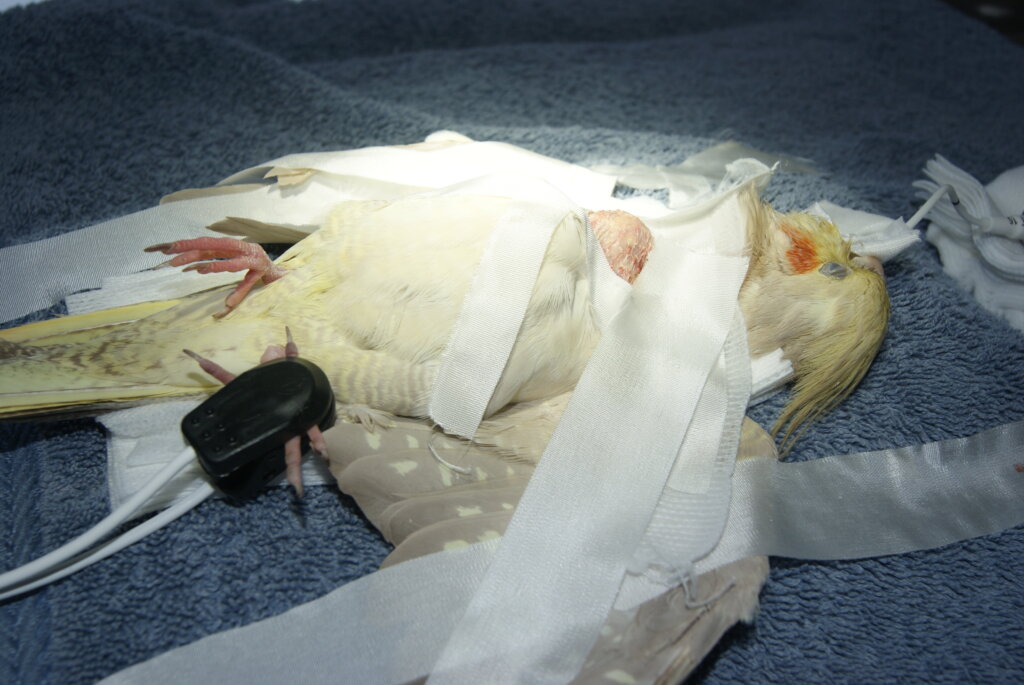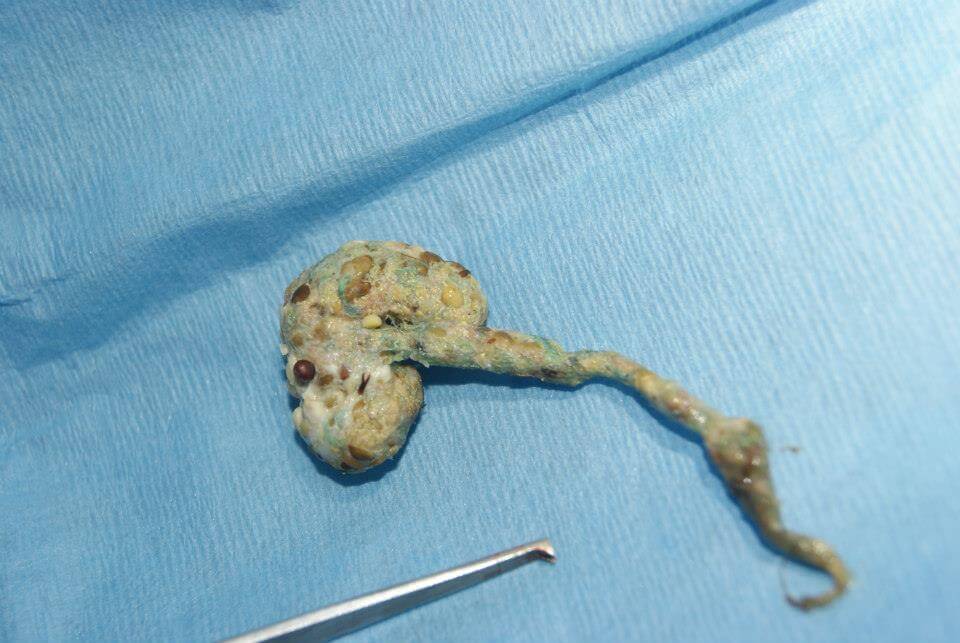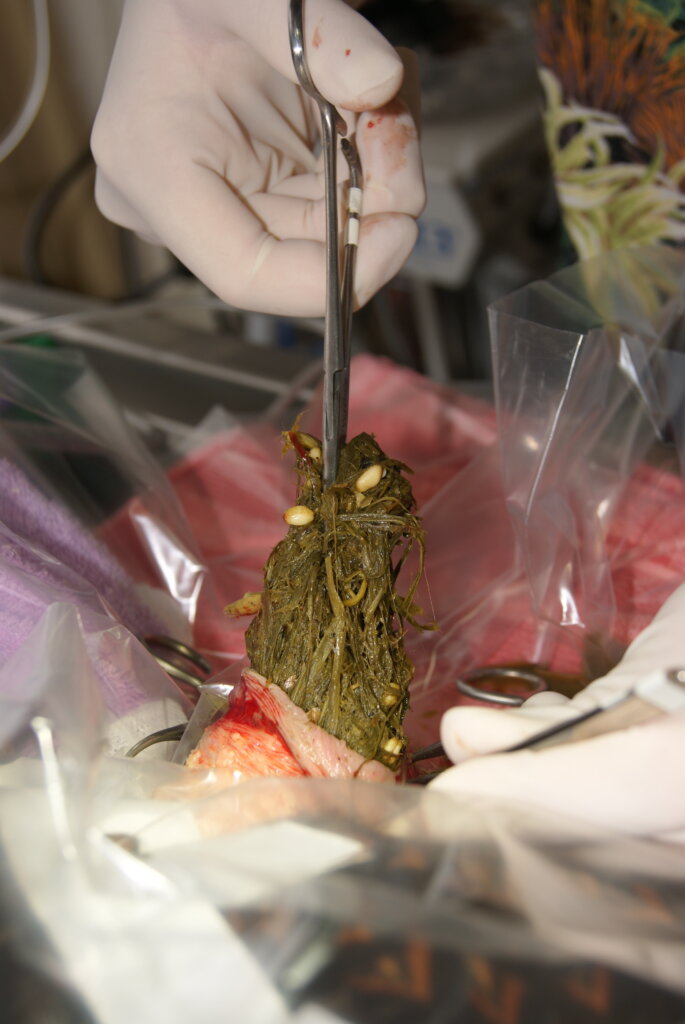There are very few people that eat a perfectly balanced diet. Whether it be too much ice cream or a whole block of chocolate, we all have our weaknesses. Our pets often take this to the next level with some dogs eating socks, ferrets ingesting ear plugs and cuts chewing on wool! Birds are no exception to this and this article looks at some of the things birds commonly chew on and how to avoid this from happening to your bird.
PATIENT: DEXTER
Dexter the Macaw has a metallic rock removed after ingestion
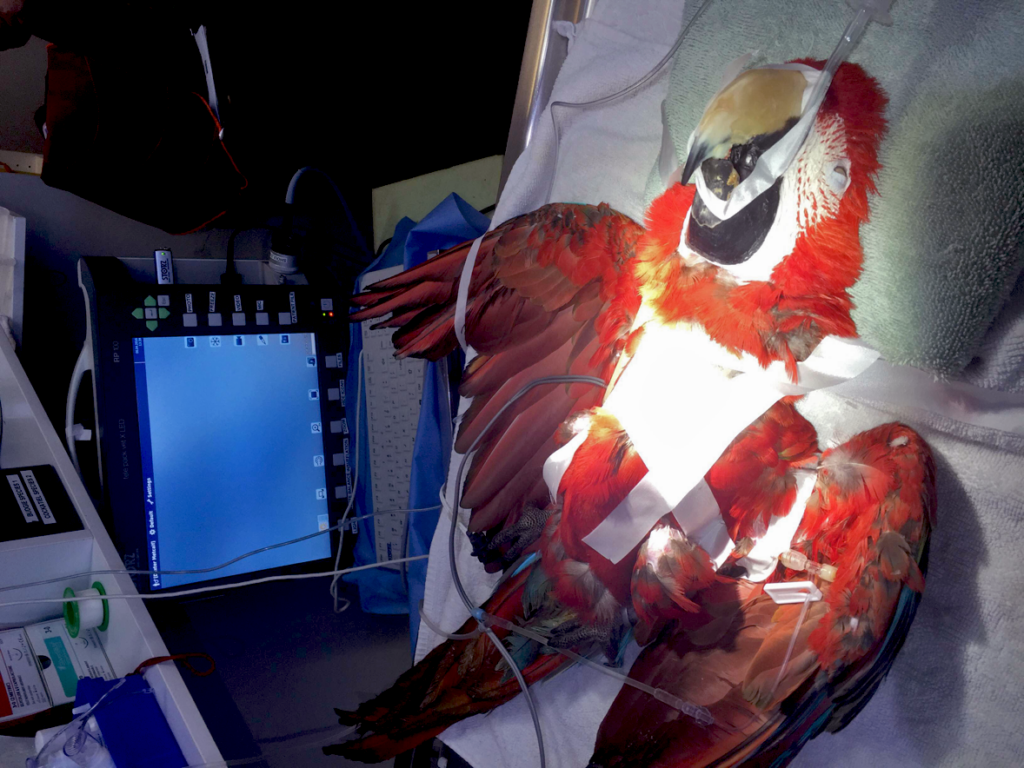
What are some of the things that birds commonly eat?
It really depends on the species and where they are allowed access. For example, a budgie that is always kept in its cage will only be able to eat what is placed in it. However, this doesn’t mean that caged birds are safe, as many owners inadvertently place dangerous toys into the cage without realising that they may cause a problem.
Examples of commonly sold and potentially dangerous toys include those made from:
- String
- Rope
- Fibre
- Some metallic items
If your parrot has free access around the house, then the potential to ingest things that they shouldn’t increases considerably. Whether it be a bite out of the avocado that you have in your fruit bowl, nibbling on the chocolate you are eating or chewing on the curtain rails – all have the potential to cause serious harm. For this reason, parrots that are allowed free access around the house should be monitored closely.
Chickens also can eat things they shouldn’t. Ingestion of scrap metal that is lying around in your garden is commonly seen, as is the ingestion of long grass which can cause a gastrointestinal obstruction in some cases.
What signs should I watch out for?
The signs vary considerably depending on what they have eaten, however, common signs that you should look out for include:
- Vomiting or Regurgitation
- Diarrhoea
- Inappetence
- becoming Unbalanced
- Weight Loss
- Being Lethargic
Do all rope-related toys cause problems?
Not all birds will chew on rope toys, however, if they have access to them then there is always a risk. For example, some birds have always had access to rope toys and have never had a problem. Avoid rope toys and instead choose sage bird toys made from natural wood. Provide a range of different enrichment activities like allowing your bird access to native foliage that encourages them to forage. Behavioural training can also really help to both increase your bond with your bird bas well as keep them occupied so they aren’t bored and looking for something to chew on.
If you would like any further information about sterilisations, get in touch with your local exotics veterinary clinic or contact Dr James at [email protected]
